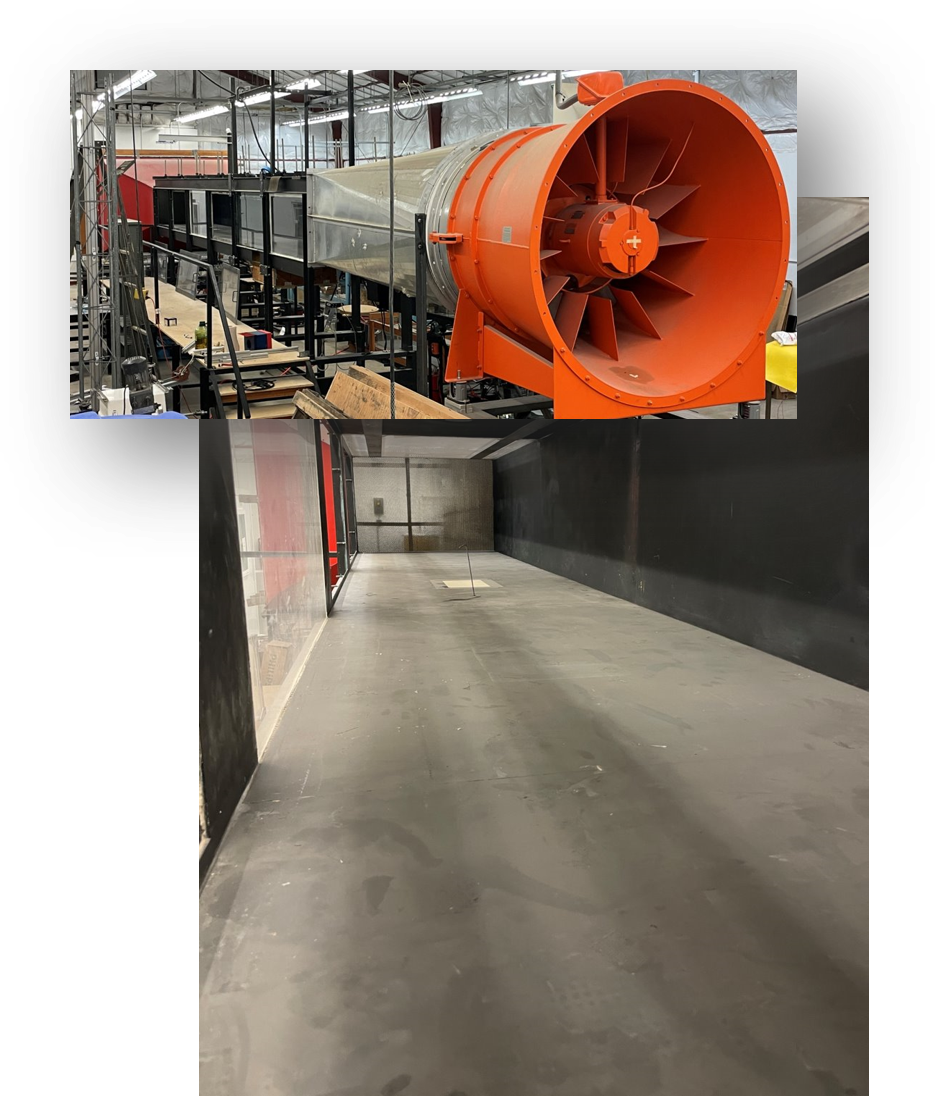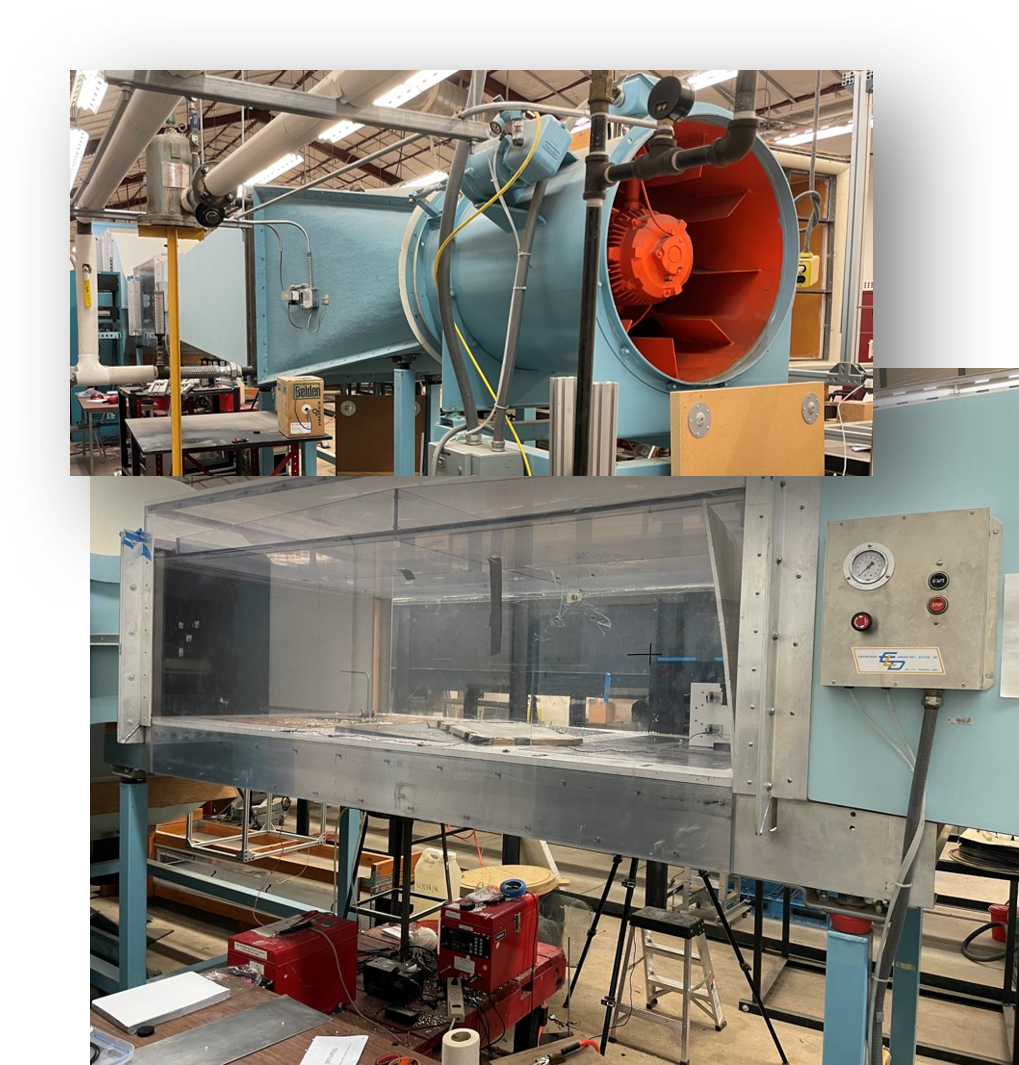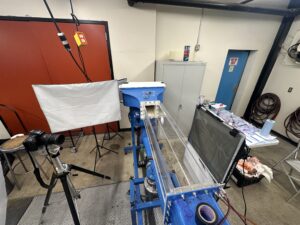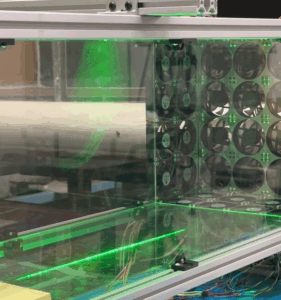
The Surface Layer Turbulence and Environmental Science Test facility
SLTEST is owned by the Dugway Proving Grounds in Utah. Located about 2.5 hours from campus, this facility offers a very unique platform for testing both fundamental fluid physics as well as environmental applications. A 250 km x 50 km fetch of land, which was once the bed of Great Salt Lake, features a 100-m thick boundary layer, with free-stream velocities of around 10 m/s and a nominally zero pressure gradient. Friction Reynolds number of over 1 million are attainable, enabling extreme scale separation to study test several engineering flows. We can examine the large-scale structure of flows, a variety of surface roughness regimes, and aeroacoustics measurements as well.

Boundary Layer Wind Tunnel
This is a low-speed open circuit wind tunnel can achieve flow speeds of 5 - 45 m/s and has a test section with 1 m x 0.7 m cross section and 10 m long. We can achieve incompressible, isothermal flows of Reynolds numbers of 2.4 million per meter. The walls of test section can be adjusted to achieve a variety of pressure gradient conditions enabling, boundary layer studies over a large matrix of conditions. This tunnel can also be configured to undertake obstacle flows, wakes and shear layers, rotating systems, fluid-structure interaction studies.

Stratified Flow Wind Tunnel
This is a low-speed open circuit wind tunnel located capable of generating moderate Reynolds number, incompressible and thermally stratified flows in a test-section of 1 m x 0.5 m test section. Thermal stratifications of up to 70C can be achieved in the test-section enabling a range of stability conditions towards atmospheric flow studies.
If you would like to use the facilities please reach out to agastya.balantrapu@utah.edu with your requirements.

Water Tunnel
This water tunnel has a cross-sectional area of approx. 25 cm x 25 cm and is capable of 1 m/s flow speed, implying Reynolds numbers of up to 250,000. While this generally used for educational purposes at the university, we can use this for multiphase flow experiments and simple flow visualizations.

Instrumentation
We use a variety of instruments to document spatio-temporally varying flows, sound signatures and fluid structure interaction. Some examples include:
- Particle Image Velocimetry (high speed and spatially resolved)
- Lagrangian Particle Tracking in Atmospheric Flows
- Constant Temperature Hotwire Anemometry
- Sonic anemometers
- Acoustic Microphone
